
This information on this page was last updated: June 25, 2003
 |
|
|
This information on this page was last updated: June 25, 2003 |
|
|
Distance from the Earth: 152,069,922
km
|

|
Distance from the Sun: 47,871,319 km. Distance from the Earth: 186,997,338 |

|
||||||||||
|
In 04 deg. Cancer*
Solar Wind AURORA OUTLOOK: Geomagnetic activity is low now, but it could intensify around June 28th. That's when Earth will encounter a solar wind stream flowing from a coronal hole on the sun. The best observing sites will be at high-latitudes: e.g., southern parts of New Zealand and Australia, northern Europe, Canada and US states like Minnesota and Michigan, Solar Flares: Probabilities for a
medium-sized (M-class) or a major (X-class) solar flare during the next
24/48 hours are tabulated below. |
Viewing :That most elusive of the naked-eye planets, is in the dawn skies but cannot be easily seen, laying quite low on the eastern horizon for most to of the month. | ||||||||||||
| Gemini 22 deg. * | |||||||||||||
| Distance from the Sun:
107,710,467 km Distance from Earth: 248,332,465 |
 |
||||||||||||
| Viewing:
Like Mercury, is low in the east at sunrise, but a bit higher and much
brighter. Overall, however, it is still too close to the Sun to be
observed easily.
In Gemini 19 deg.* |
|||||||||||||
|
Distance from the Sun: 152,069,922
km
|
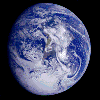
|
Distance from the Sun:
210,932,998 km Distance from Earth: 88,262,744 |
 |
||||||||||
| Geomagnetic Storms: Probabilities
for significant disturbances in Earth's magnetic field are given for three
activity levels: active, minor storm, severe storm Updated at 2003 Apr 13 2200 UTC Mid-latitudes 0-24 hr 24-48 hr ACTIVE 35 % 30 % MINOR 15 % 10 % SEVERE 05 % 01 % High latitudes 0-24 hr 24-48 hr ACTIVE 45 % 35 % MINOR 25 % 20 % SEVERE 10 % 05 % |
Viewing:Mars slowly but
surely continues to brighten as we head toward an historically close
approach in late August. Rising in Capricornus an hour or so after
midnight, it is still relatively low in the southeastern sky at sunrise.
Now in the negative magnitudes, Mars is brighter than any star in its
vicinity of the sky.
In Pisces 03 deg.*
|
||||||||||||
|
New Moon June 29th @ 2:39
p.m.
First Quarter July 6th @
10:32 p.m.
Full 'Mead' Moon July 13th
@3:21 p.m.
Last Quarter July 21st @
3:03 a.m.
New Moon July 29th @ 2:53
a.m.
|
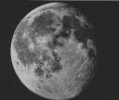
|
Distance from the Sun: 801,844,587
km
Distance from Earth: 906,563,096 |
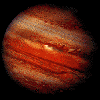
|
||||||||||
|
Distance to the Earth: 367,914 km.
Viewing: "New Moon" cannot be seen at all. A few days before New Moon a thin crescent may be observed in the predawn eastern sky, and a few days after New Moon a thin crescent will appear in the western dusk. "First Quarter" Moon rises at about noon, is high in the south at sunset, and sets at roughly midnight. "Full Moon." can be seen in the east at about sunset, in the southern sky at midnight, and setting in the western sky at about dawn. "Last Quarter" Moon rises at about midnight and can be seen in the southern sky at dawn. Of course, each phase grades into the next, and the Moon may sometimes be seen in broad daylight. |
Viewing: Jupiter,
in Cancer about half-way between Gemini and Leo, still dominates the
evening sky. Its nightly procession of moons provides fascination in a
small telescope, but only the four largest (of the 60 now known) can be
seen. Look early, though, as this King of the Planets sets by roughly 1
a.m.
In Leo 17 deg.* |
||||||||||||
|
|
|||||||||||||
|
The next meteor shower is the Delta Aquarids on July 14 to Aug 18. Peak July 29/30 Source: Aquarius The maximum hourly rate typically reaches 15-20.
|
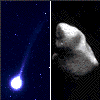 |
Distance
from the Sun: 1,349,372,794 km Distance from Earth: 1,501,962,622 |
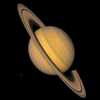 |
||||||||||
| Viewing: Saturn although still bright, is low in the west at sunset, roughly between Taurus and Gemini. Unfortunately, the Sun is rushing toward a conjunction with Saturn in late June, and the Ringed Planet is all but lost in the solar glare by the end of the month. | |||||||||||||
|
In Cancer 02 deg.*
|
|||||||||||||
| Potentially Hazardous Asteroids (PHAs) are space rocks larger than approximately 100m that can come closer to Earth than 0.05 AU. None of the known PHAs are on a collision course with our planet, although astronomers are finding new ones all the time. | Distance
from the Sun: 2,997,941,329 km Distance from Earth: 2,917,158,478 In Pisces 02 deg.* |
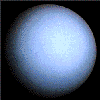 |
|||||||||||
| On
13 Apr 2003 there were 513
known Potentially Hazardous Asteroids |
|||||||||||||
June
2003 Earth-asteroid encounters
Notes: LD is a "Lunar Distance." 1 LD = 384,401 km, the distance between Earth and the Moon. 1 LD also equals 0.00256 AU. MAG is the visual magnitude of the asteroid on the date of closest approach. Thank you: SpaceWeather.com |
Distance from
the Sun: 4,508,879,823 km Distance from Earth: 4,387,705,547 In Aquarius 12 deg.* |
 |
|||||||||||
|
Distance from the Sun: 4,606,118,439
km
In Sagittarius 18 deg.*
Retrograde until August 28th |
|
||||||||||||
| April May June July August September |
* Please note. The sign in which the planet is in and it's degree are
calculated from a ' traditional' astrological viewpoint.
If you wish to convert into modern more physically 'accurate' positioning you must take into account the precession of the equinoxes and shift the signs as displayed on this page 'back' one sign. |
||||||||||||